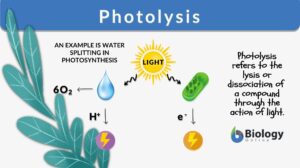Search Results for: x-rays
Electromagnetic spectrum
Definition noun The spectrum of all types of electromagnetic radiation Supplement The electromagnetic spectrum includes... Read More
Photolysis
Photolysis Definition We define photolysis as a chemical process in which chemical compounds or molecules are split into... Read More
Cross-linking
Cross-linking Definition Cross-linking, in general, means the forming of cross-links between the joining structures. In... Read More
Radiodensity
Definition noun The state or quality of being radiodense, i.e. dense to X-rays or other radiation Supplement In radiography,... Read More
Missense mutation
What is a missense mutation? Literally speaking, a mutation that changes the meaning of the encoded gene sequence is the... Read More
Kingdom Animalia
Kingdom Animalia Definition Each person can say that they know of or can name at least one animal. However, do people know... Read More
Lobar pneumonia
Definition noun (pathology) A type of pneumonia that affects the lobe or an enormous section of a lung, and is often caused... Read More
Spider cancer
Definition noun A term no longer in common use to refer to a malignant neoplasm having a rhizoid or filamentous edge of... Read More
Teleroentgenography
teleroentgenography --> teleradiography radiography with the x-ray tube positioned about 2 m from the film thereby... Read More
Peritoneum
What is the Peritoneum? The term peritoneum refers to the serous membrane that constitutes the biologically active inner... Read More
Chondrichthyes
Definition noun A taxonomic class comprised of cartilaginous fish Supplement Chondrichthyes is taxonomic superclass of... Read More
Commensalism
Commensalism Definition What is commensalism? Literally, commensalism is a Latin word that means ‘to eat at the same... Read More
Silent mutation
A mutation is a change in the nucleotide sequence of a gene or a chromosome. When there is only one nucleotide involved, it... Read More
Crown of head
Crown of Head Definition The crown of the head is the upper dorsal part (or area) of the head. Several creatures have... Read More
Actinopterygian
Definition noun, plural: Actinopterygians Any of a group of Osteichthyes characterized by possessing lepidotrichia (i.e. fin... Read More
Electromagnetic radiation
Definition noun The radiation that consists of associated, interacting electric and magnetic field waves traveling at the... Read More
Irradiation
Irradiation treatment by ionising radiation, such as x-rays or radioactive sources such as radioactive iodine seeds. See:... Read More
Plant Tissues
Plants are composed of three major organ groups: roots, stems, and leaves. As we know from other areas of biology, these... Read More
Polyploidy
Reviewed by: Mary Anne Clark, Ph.D. Polyploidy Polyploidy is defined as the state of being polyploid, which... Read More
Sensory Systems
A sensory system is a part of the nervous system consisting of sensory receptors that receive stimuli from the internal and... Read More
Hypomelanism
All the body cells of living organisms bear some color due to one or the other pigment molecule or complex. The pigment can... Read More
Regeneration in humans – Finding the gene switch
Regeneration in humans is much more limited compared in other animals. Say for instance when one lost a limb, much as well... Read More
Blindness – Evolutionary regression? Maybe not!
The recent Netflix's hit flick, Bird Box, surely startled the viewers with the thrilling scenarios revolving around the... Read More
Terrestrial plant
Definition noun, plural: terrestrial plants Any animal that lives, grows and reproduce in aquatic... Read More
Xylem parenchyma
Definition noun Parenchyma cells in the xylem tissue and are involved mainly in the storage of carbohydrates, oils, and... Read More
Plant Meristems and Growth
A common mistake that many people assume is that an increase in size means an increase in growth. This is not the case.... Read More
Plant Metabolism
Introduction Plants are responsible for incredible feats of molecular transformation. The processes are always being... Read More
Moraxella bovis
Definition Noun A gram-negative non-motile coccobacillus and highly opportunistic aerobic bacterium involved in Bovine... Read More
Tapetum lucidum
Definition noun, plural: tapeta lucida A layer of tissue in the choroid or in the retinal pigment epithelium of the eye of... Read More






















